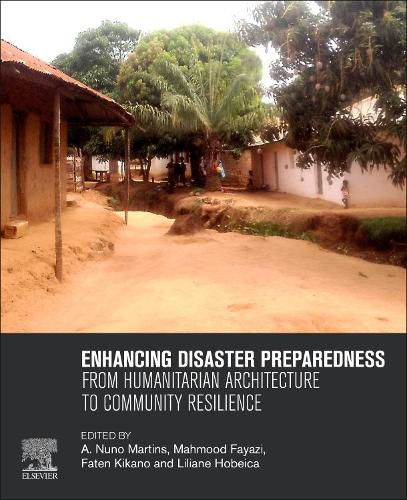Readings Newsletter
Become a Readings Member to make your shopping experience even easier.
Sign in or sign up for free!
You’re not far away from qualifying for FREE standard shipping within Australia
You’ve qualified for FREE standard shipping within Australia
The cart is loading…






Enhancing Disaster Preparedness: From Humanitarian Architecture to Community Resilience presents valuable information from the UNISDR Sendai Framework for Disaster Risk Reduction, 2015-2030. The framework includes a discussion of risk and resilience from both a theoretical and governance perspective in light of ideas that are shaping our common future. In addition, it presents innovative tools and best practices in reducing risk and building resilience. Combining the applications of social, financial, technological, design, engineering and nature-based approaches, the volume addresses rising global priorities and focuses on our global understanding of the Build Back Better principle, response to forced displacement, and resilience in decision-making.
Other sections present historic and contemporary issues, asking researchers and governments how they can use technological advances, risk and resilience metrics and modeling, business continuity practices, and past experiences to assess disasters and response preparedness and ensure effective response and recovery related to disasters. By presenting a balanced, future perspective of this Build Back Better principle, as well as methods for preparing for, acting on, and learning from forced displacement situations, the book offers practical ways for communities to prepare for, and respond to, disasters.
$9.00 standard shipping within Australia
FREE standard shipping within Australia for orders over $100.00
Express & International shipping calculated at checkout
Enhancing Disaster Preparedness: From Humanitarian Architecture to Community Resilience presents valuable information from the UNISDR Sendai Framework for Disaster Risk Reduction, 2015-2030. The framework includes a discussion of risk and resilience from both a theoretical and governance perspective in light of ideas that are shaping our common future. In addition, it presents innovative tools and best practices in reducing risk and building resilience. Combining the applications of social, financial, technological, design, engineering and nature-based approaches, the volume addresses rising global priorities and focuses on our global understanding of the Build Back Better principle, response to forced displacement, and resilience in decision-making.
Other sections present historic and contemporary issues, asking researchers and governments how they can use technological advances, risk and resilience metrics and modeling, business continuity practices, and past experiences to assess disasters and response preparedness and ensure effective response and recovery related to disasters. By presenting a balanced, future perspective of this Build Back Better principle, as well as methods for preparing for, acting on, and learning from forced displacement situations, the book offers practical ways for communities to prepare for, and respond to, disasters.